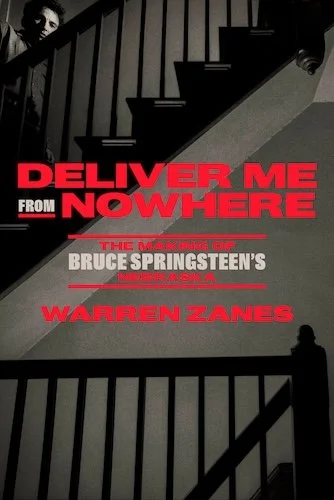Deliver Me From Nowhere
Everything I know about Nebraska derives from a brief visit when I was a kid.
It was summer and we were just passing through, visiting some friends who lived in a farmhouse on a hill. I couldn’t tell you the name of the closest town or anything about those family friends, but memories of the landscape bring back strong feelings even now. Farmland with occasional hills, more brown than green. A tree here and there. Wide open spaces. It was, to me, the most desolate, boring place in all creation.
But then the sun went down. And the winds picked up. The solitary tree in the yard took up its acrobatic routine. And then came the sirens. The tornado cellar we’d been shown in the daytime ceased to be an abstraction. This was, to me, the most frightening place in the world. And I’d grown up in Guatemala in the ‘80s.
Boring. Frightening. That, to me, was Nebraska.
Bruce Springsteen’s Nebraska, the stripped-down 1982 album, is frightening as well. Heck, the title track is written from the perspective of a serial killer. So, scary? Yes. But boring? No way. And Deliver Me From Nowhere (Crown) by Warren Zanes is a fascinating, surprisingly fun book about the making of an iconic album that is as bleak as it is brilliant.
In late 1981, Springsteen’s career was on a dizzying trajectory after the successive releases of Born to Run (1975), Darkness on the Edge of Town (1978), and The River (1980)—the last being a double album recorded to showcase the E Street Band in all their glory; it also generated Springsteen’s first big hit, “Hungry Heart.” By all appearances, Springsteen was on top of the world.
Then, returning from an exhausting three-leg, 140-date tour spanning a full year, Springsteen . . . basically disappeared. He retreated alone to a small rental house in Colts Neck, New Jersey, receding from public view. It was there, in his bedroom, that he slowly started recording some demos onto cassettes using an amateur 4-track machine. In a departure from what had brought him critical and commercial success, these weren’t rock anthems fit for football stadiums or the radio. He didn’t even think he was making a new record.
These songs were quieter, more vulnerable. They were story songs about the terrible and beautiful world we inhabit, with inspiration coming from Flannery O’Connor’s short stories and the Terrence Malick film Badlands. He recorded himself playing his acoustic guitar and his harmonica. Being demos, there were the usual imperfections you’d expect. Many of his vocals, recorded with a haunting echo effect, amounted to little more than a mournful whisper.
Eventually, with an album’s worth of material in a single cassette tape he carried around in his jacket pocket, Springsteen decided to gather his band in the studio to properly record the songs.
But nothing worked. The original feeling of the songs just wasn’t there. Which is how, despite everything, after many twists and turns, Springsteen ended up releasing the demos—not as demos, but as his sixth “studio” album. Today it stands as an album unlike anything Springsteen has done, before or since. Rolling Stone called it one of the greatest albums of all time.
And it was, for all intents and purposes, an accident.
“It’s a record you come back to, a record with more than its share of mystery, a record that keeps mattering and keeps throwing off new meanings,” Zanes writes. “Maybe it’s the record of Springsteen’s that’s the most collaborative with the listener. Unfinished. You could say he left it for us to complete. He trusted his art, and trusted us to do something with it.”
Three years later, Springsteen returned to stadium-worthy rock anthems with the release of Born in the U.S.A., an album that continues to be both celebrated and misunderstood. Springsteen and his band went back on the road, a tour that was bigger and better than ever. “It led people to imagine that Born in the U.S.A. had some kind of master plan behind it, a battle strategy,” Zanes writes. “But it didn’t. It had Nebraska behind it. That’s where Born in the U.S.A. got its strength.”
